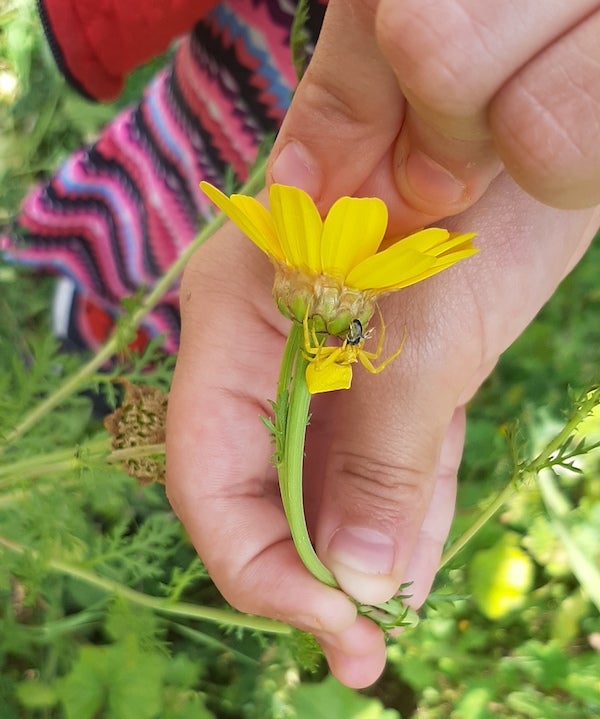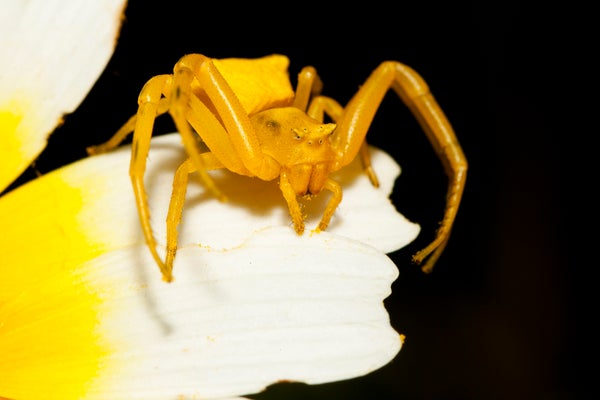This article was published in Scientific American’s former blog network and reflects the views of the author, not necessarily those of Scientific American
For the past few days, I have been thinking of Jean-Henri Fabre, the French naturalist known for lying motionless on the bare earth in the sweltering heat on the bank of the river Rhône at Avignon, his eyes searching incessantly for insects. A patch of barren, sun-scorched ground, as Fabre wrote in his book The Life of the Fly, "which no one would have had at a gift to sow with a pinch of turnip seed, is an earthly paradise for the bees and wasps."
When the world shrinks, as it has almost everywhere in the time of coronavirus, it seems inevitable that our view of the world narrows, as well. When the rules dictate that we must stay close to home, we look for thrills in our smaller sphere. We see things we did not notice before. For our nine-year-old girl-and-boy twins, that means beetles. Like Fabre, whom Charles Darwin called an "inimitable observer," my children—and in particular, my daughter—have become passionate beetle- and spider-hunters in the grassy, wildflower and thistle–filled park close to our home in Israel.
These beetles are bountiful: the past winter in Israel has been unusually rainy, with rainfall reaching more than 120 percent of the average for the entire season, according to the Israel Meterological Service. The abundance of rain has led to a profusion of wildflowers: anemones, cyclamens, poppies, field marigolds, purple-flowered thistles called dardulin Arabic, and the unusual Palestine arum, which emits a smell of rotting fruit to attract pollinating fruit flies.
On supporting science journalism
If you're enjoying this article, consider supporting our award-winning journalism by subscribing. By purchasing a subscription you are helping to ensure the future of impactful stories about the discoveries and ideas shaping our world today.
My daughter, who has keen eyesight coupled with a dedication to finding exquisite beetles, found the beautiful, iridescent green Protaetia cuprea ignicollis (aka, coppery beetle of the thorns or, in Hebrew, nechoshtit ha-kotzim) burrowing inside the purple flowers of the dardul. She discovered a lovely yellow crab spider, Thomisus onustus, in the act of devouring a small insect. The delicate arachnid was perfectly camouflaged beneath the petals of a yellow groundsel (Senecio vernalis).

Credit: Josie Glausiusz
She found clusters of white-speckled black beetles among the ring of pollen-producing stamens of the crown anemone flower, Anemone coronaria (kalanit in Hebrew, from the word kala, meaning "bride"). The open flowers of the crown anemone allow the "relatively clumsy" beetle to roll down to its center, where it can pick up pollen and fly with it to another flower.
Had my children continued going to school, it is unlikely that we would have discovered such beauties. My exercise-of-choice is swimming in an indoor, chlorinated pool, a now-distant pleasure. But beginning in mid-March, when schools in Israel closed, my children were home for six weeks, and for much of that time we were forbidden to walk more than 100 meters from our house. In our small suburban town, we are fortunate to live very close to a small park, where wildflowers thrived as the municipality neglected to mow the grass. To this park we repaired daily to look for beetles.
It seems a singular privilege to observe these elegant insects, an opportunity that we should savor, given that in many places insect populations are declining dramatically. A study published in the April 24, 2020 issue of the journal Science, which compiled data from 166 long-term surveys across 1,676 sites across the globe, reported that land-dwelling, or terrestrial, insects have declined in abundance by an average of 9 percent per decade since 1990, thanks to destruction of wild habitats, pesticide use and climate change, which is wiping out insects en masse in the tropics.
It's not all bad news: According to lead author Roel van Klink of the German Center for Integrative Biodiversity Research in Leipzig, insects that live in fresh water, like midges and mayflies, have increased in abundance by 11 percent per decade, thanks to action to clean up polluted rivers and lakes. But these freshwater insects "are just a fraction of land-based insects, not more than 10 percent," Van Klink told the BBC, "so the numbers of freshwater insects will never be able to compensate for the terrestrial insects."
Land-dwelling insects are also essential to human existence: they pollinate crops, decompose waste, and eat pests too. And these insects need our protection; we need pollinator-friendly pesticide policies, conservation of their habitats, better public awareness of their value, and urgent action on climate change. In fact, the best thing people can do to encourage native insect pollinators is to allow weedy flowers to grow in their yards, and to plant flowers, according to Damon Hall of the University of Missouri, the author of a recent study on public perceptions of insect pollinators which showed that, in a nutshell, "people now like bees."
It might seem odd to put in a plea for bugs at a time when it seems that humanity is in peril. As I write this, more than four million people in 212 countries have been diagnosed with COVID-19, and 289,088 have died of the infection. The virus has caused immeasurable suffering, not just to those infected but to those who have lost their jobs, facing hunger and homelessness, and to women in abusive relationships who are locked in with violent spouses.
But without insects, humanity would be impoverished and very probably malnourished. According to the Food and Agriculture Organization, 75 percent of the world’s major food crops, from cacao to pumpkins, "benefit from or are reliant on animal-mediated pollination," mainly by bees but also by birds, bats, flies, butterflies, moths and beetles. The estimated global value to humans of these pollination services is more than $166 billion per year.
Aside from the "services" they offer us, insects are also entitled to their own right to exist, regardless of human need. In a time of isolation, these small beetles, to which we had paid no attention previously, remind us how rich the natural world is, even close to home. Economics aside, there is something to be said for simply gazing, with our children, in wonder at these leggy creatures, as they shimmer and crawl among the petals of our local wildflowers.
To quote Jean-Henri Fabre: "Come here, one and all of you—you, the sting-bearers, and you, the wing-cased armour-clads—take up my defense and bear witness in my favor. Tell of the intimate terms on which I live with you, of the patience with which I observe you, of the care with which I record your actions."
Read more about the coronavirus outbreak from Scientific American here, and read coverage from our international network of magazines here.
